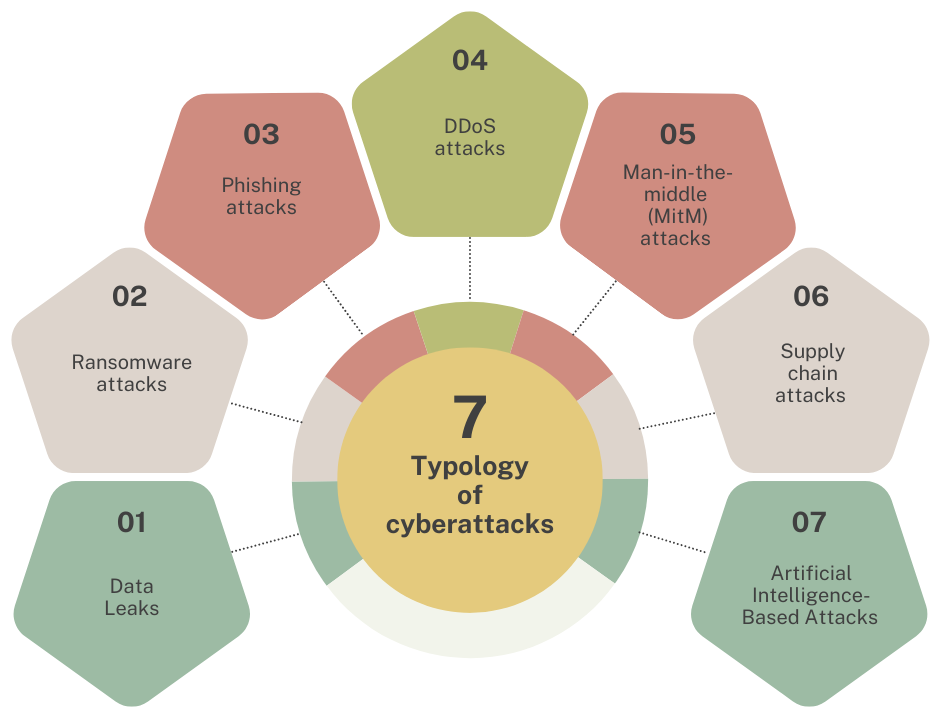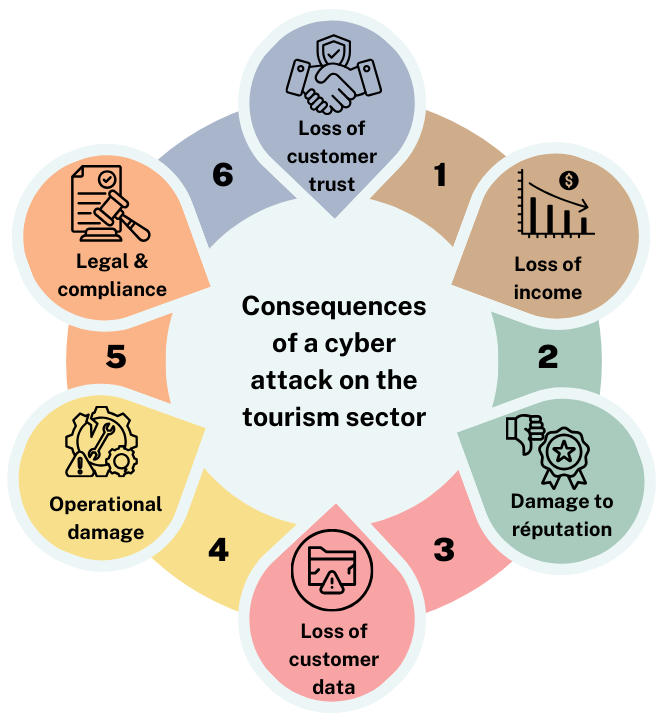Tourism & Cybersecurity
The tourism sector, booming digitally, has become a prime target for cybercriminals.
The tourism industry has undergone a profound transformation in recent years with the advent of digital technologies. Today, tourists book their flights and hotels online, compare prices on specialized platforms, share their experiences on social networks and use mobile applications to navigate the cities they visit. This increasing digitalization offers many benefits to tourism stakeholders, such as increasing visibility, optimizing processes and personalizing the customer experience.
However, with this increased reliance on digital technologies comes an increased risk of cyberattacks. Cybercriminals target tourism businesses because they collect and store a large amount of sensitive data about their customers, such as payment information, passports and email addresses . This data can be used for malicious purposes, such as identity theft, financial fraud or account takeover.
What types of cyberattacks can the Tourism sector suffer?
The tourism sector, booming digitally, has become a prime target for cybercriminals. The wealth of sensitive data collected by tourism players (hotels, airlines, travel agencies, online platforms, etc.) is attracting attention, especially since security practices are not always up to the challenge.
Typology of cyberattacks
Cyberattacks can take varied forms, each with their own modus operandi and objectives.

Among the most widespread in the tourism sector, we find:
- Data leaks : Infiltration of computer systems to steal sensitive information such as banking data, passport numbers or medical contact details. This data can then be resold on the dark web or used for acts of fraud or identity theft.
- Ransomware attacks : Introduction of malware that blocks access to data and computer systems, rendering them unusable. The hackers then demand a ransom to unlock them, threatening to permanently destroy the data in the event of non-payment.
- Phishing attacks : Sending deceptive emails or text messages tricking victims into clicking on malicious links or disclosing personal information. Hackers can then use this information to commit fraud or identity theft.
- Denial of Service (DDoS) attacks : Overwhelming a website or online service with massive artificial traffic, making it inaccessible to legitimate users. These attacks can cause serious damage to a company’s reputation and result in significant financial losses.
- Man-in-the-middle ( MitM ) attacks : Interception of communication between two parties (for example, between a customer and a website) to steal data or modify the transmitted information.
- Supply chain attacks : Exploiting a supplier’s security vulnerabilities to gain access to a customer company’s IT systems.
- Artificial Intelligence-Based Attacks : Using AI to automate attacks, make them more sophisticated, and target victims more effectively.
Concrete examples of cyberattacks hitting the tourism sector
Many companies in the tourism sector have already been victims of resounding cyberattacks, with sometimes dramatic consequences.
- Marriott International (2018): Massive data breach affecting over 500 million customers, compromising their names, addresses, passports and credit card numbers.
- British Airways (2019): Ransomware attack causing over €100 million in losses and leading to flight cancellations, seriously disrupting the travel of thousands of passengers.
- Booking.com (2020): Phishing attack that allowed hackers to access the data of 9 million customers, including their email addresses , phone numbers and payment information.
Discover the Booking.com security breach
What are the consequences of a cyber attack on the tourism sector?
The consequences of a cyberattack on the tourism sector can be devastating, both for individual businesses and the industry as a whole.

Here are some of the most significant potential impacts:
Loss of income
Cyberattacks can cause website downtime, reservation cancellations, and other disruptions that can cost businesses in the tourism industry.
For example, a large data breach at an airline can lead to mass flight cancellations and refunds, which can result in significant revenue losses.
Damage to reputation
Cyberattacks can also seriously damage the reputation of businesses in the tourism sector. If customers feel like their data isn’t secure, they are much less likely to book travel with a company.
Additionally, negative media coverage of a cyberattack can further tarnish a company’s reputation and harm its customer base.
Loss of customer data
Customer data, such as names, addresses, credit card numbers and passport information, are prime targets for cybercriminals.
This data can be used to steal money, commit identity fraud or even for blackmail purposes. A customer data breach can have a devastating impact on customer trust and lead to costly legal action.
Operational damage
Cyberattacks can also disrupt the operations of a tourism business. For example, a denial-of-service (DDOS) attack can render a website inaccessible, which can prevent customers from making reservations or accessing important information.
Cyberattacks can also damage or destroy critical data, which can result in significant repair and restoration costs.
Legal and compliance costs
In the event of a cyberattack, businesses in the tourism sector may face significant legal and compliance costs . This may include the cost of notifying affected customers, conducting data breach investigations and taking steps to comply with data protection laws.
Loss of customer trust
Customer trust is essential in the tourism industry. If customers feel like their data isn’t secure, they are much less likely to book travel with a company. Cyberattacks can seriously damage customer trust and take years to rebuild.
How should the tourism sector protect itself from cybersecurity risks?
Implementing a robust cybersecurity strategy is essential to protect data, preserve reputation and ensure business continuity.
Beyond the general measures mentioned above, it is essential to adapt protection to the specificities of the sector. Here are some concrete examples:
Securing online booking platforms and websites
- Implementation of an HTTPS protocol to guarantee the encryption of data exchanged.
- Strong authentication for access to customer accounts, favoring biometric solutions or physical security keys.
- Regular penetration testing to identify and fix security vulnerabilities.
- Deployment of web firewalls to block malicious attacks.
Protection of payment systems
- Use of secure payment solutions compliant with PCI DSS standards.
- Implementation of a fraud detection system to identify suspicious transactions.
- Encryption of credit card data during storage and transmission.
Identity and Access Management (IAM)
- Establishment of a rigorous password policy and implementation of multi-factor authentication .
- Limitation of access to data and systems based on the needs of each user.
- Monitoring user activities to detect suspicious behavior.
Awareness of customers and staff
- Regular awareness campaigns to inform customers of cybersecurity risks and best practices to adopt.
- Dedicated training for employees to enable them to recognize threats and respond effectively to incidents.
- Implementation of an incident reporting program so employees can report suspicious behavior.
By taking a proactive approach and implementing a robust cybersecurity strategy, tourism stakeholders can protect their customers, their data and their reputation, and thus thrive in an increasingly complex digital environment.
